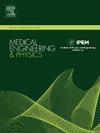A novel diagnosis method combined dual-channel SE-ResNet with expert features for inter-patient heartbeat classification
Abstract
As the number of patients with cardiovascular diseases (CVDs) increases annually, a reliable and automated system for detecting electrocardiogram (ECG) abnormalities is becoming increasingly essential. Scholars have developed numerous methods of arrhythmia classification using machine learning or deep learning. However, the issue of low classification rates of individual classes in inter-patient heartbeat classification remains a challenge. This study proposes a method for inter-patient heartbeat classification by fusing dual-channel squeeze-and-excitation residual neural networks (SE-ResNet) and expert features. In the preprocessing stage, ECG heartbeats extracted from both leads of ECG signals are filtered and normalized. Additionally, nine features representing waveform morphology and heartbeat contextual information are selected to be fused with the deep neural networks. Using different filter and kernel sizes for each block, the SE-residual block-based model can effectively learn long-term features between heartbeats. The divided ECG heartbeats and extracted features are then input to the improved SE-ResNet for training and testing according to the inter-patient scheme. The focal loss is utilized to handle the heartbeat of the imbalance category. The proposed arrhythmia classification method is evaluated on three open-source databases, and it achieved an overall F1-score of 83.39 % in the MIT-BIH database. This system can be applied in the scenario of daily monitoring of ECG and plays a significant role in diagnosing arrhythmias.

 求助内容:
求助内容: 应助结果提醒方式:
应助结果提醒方式:


